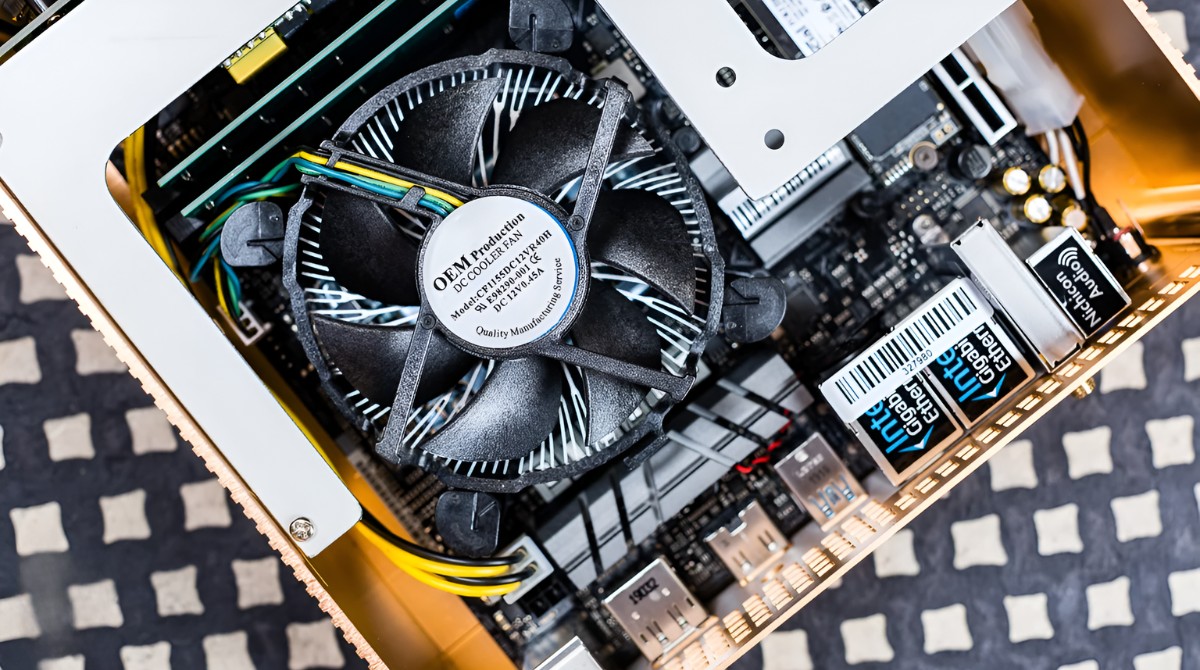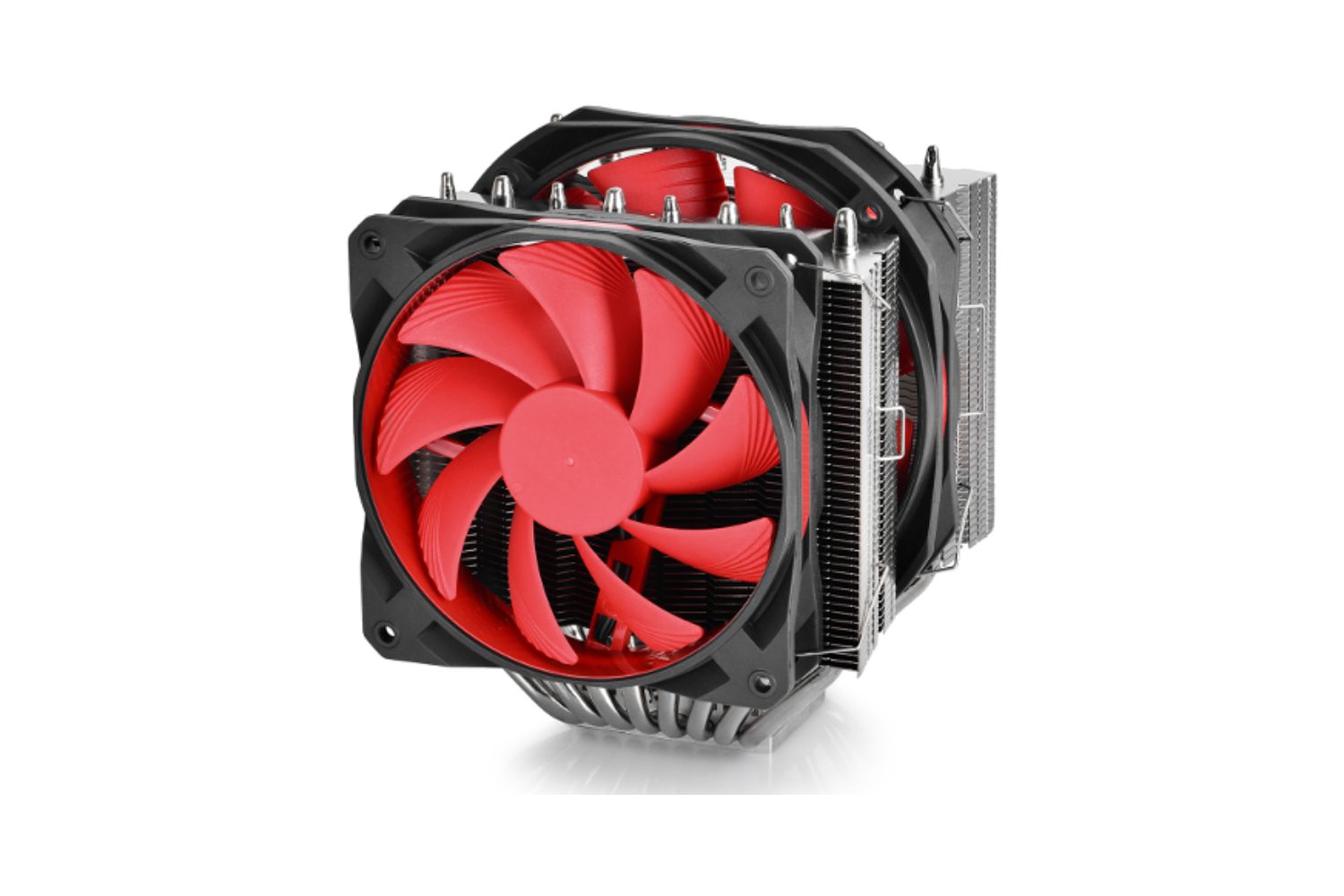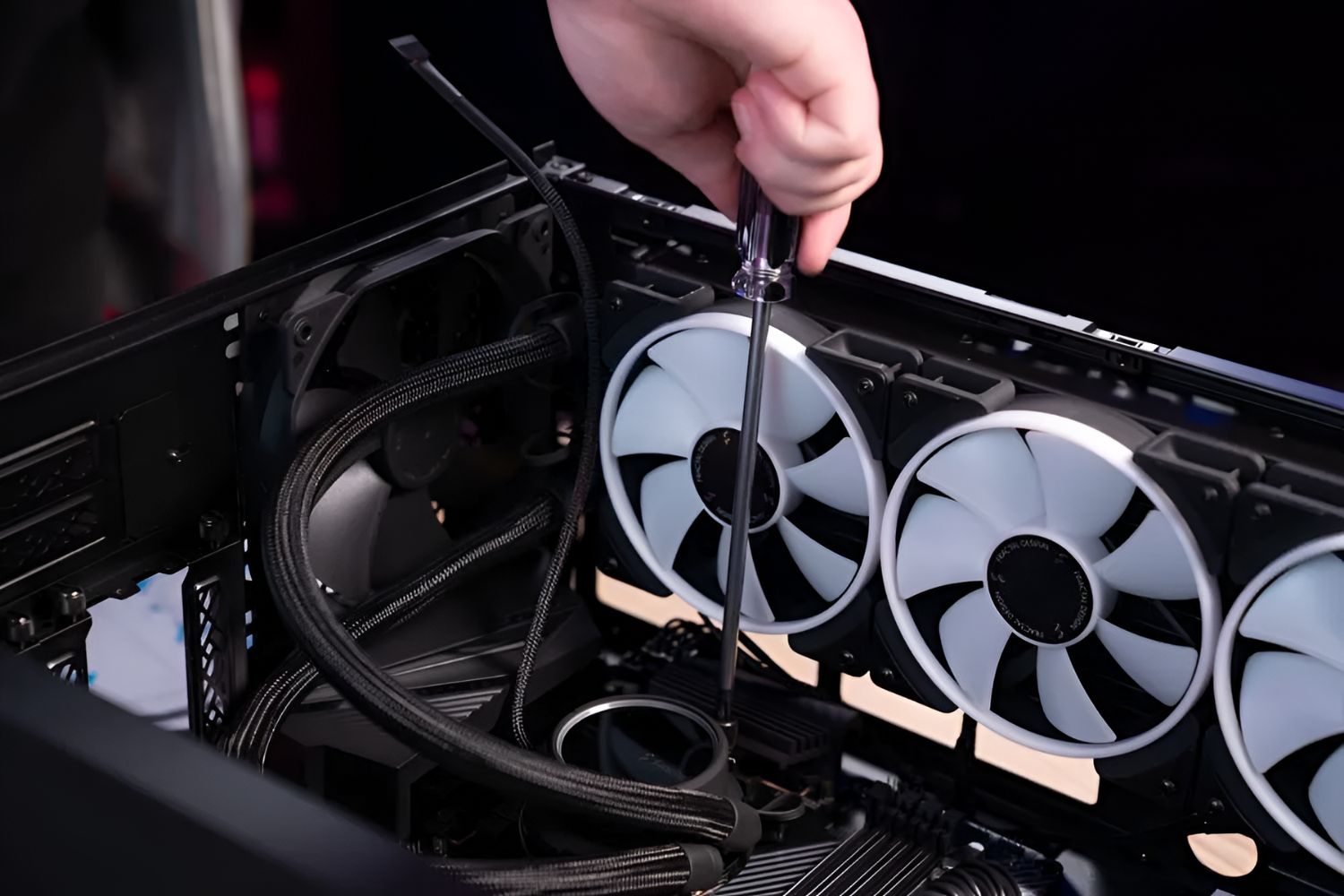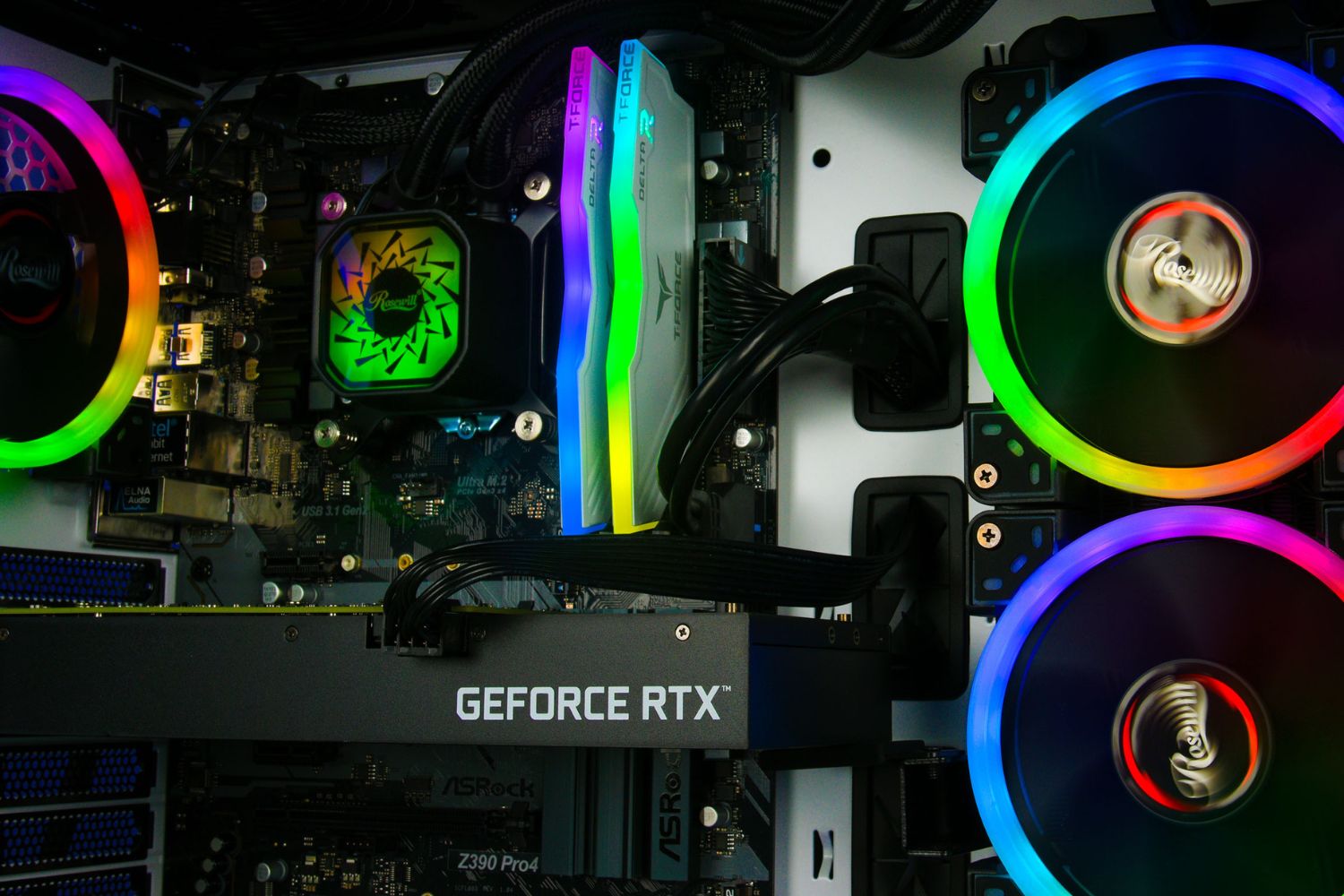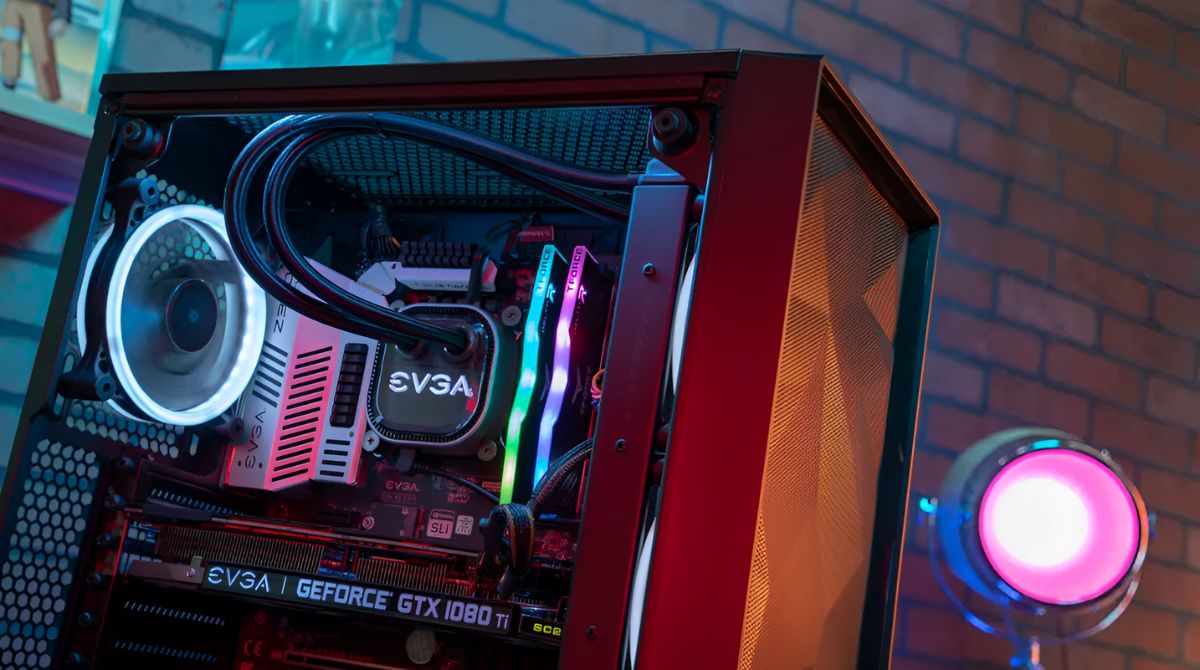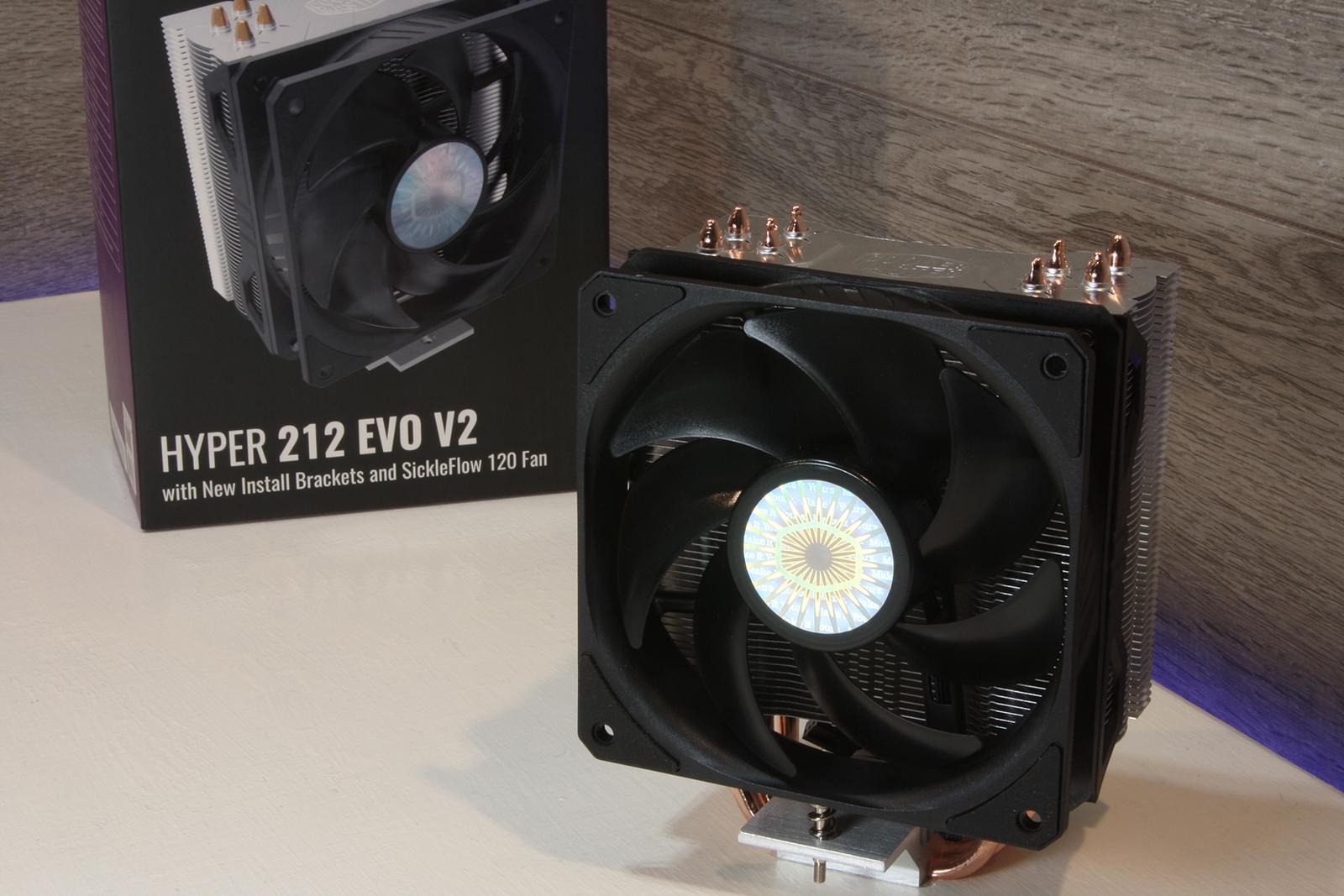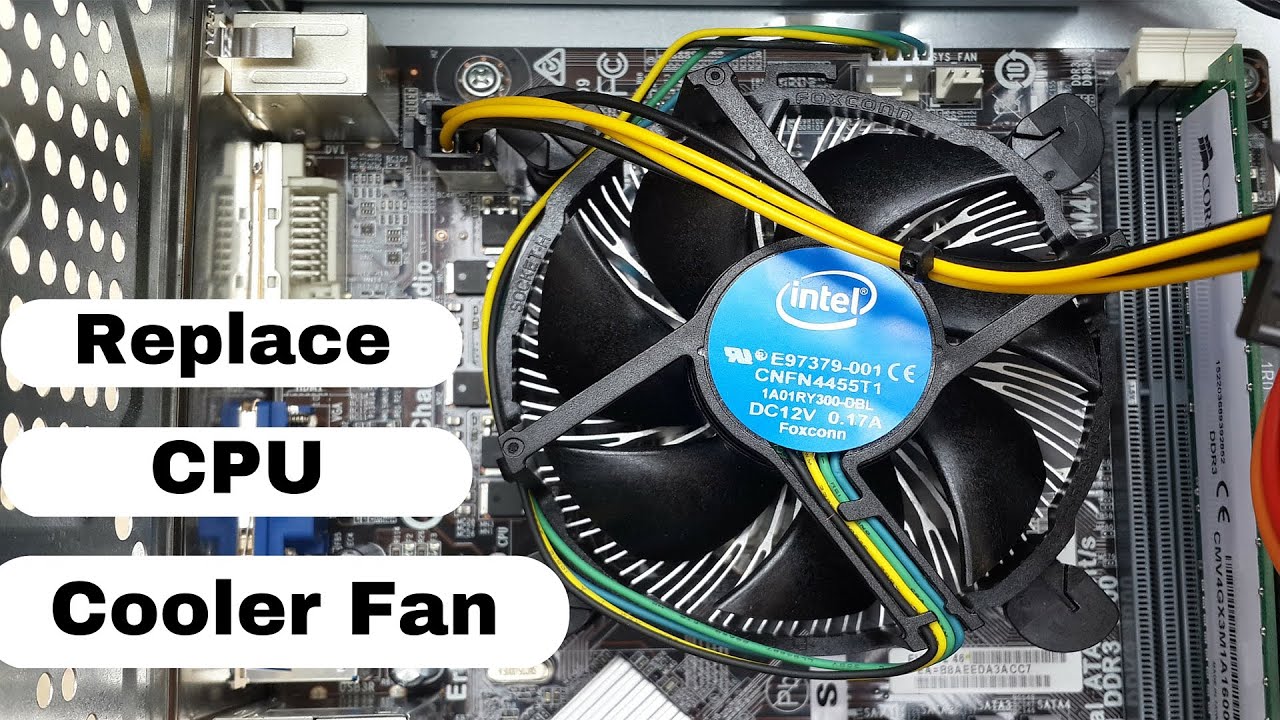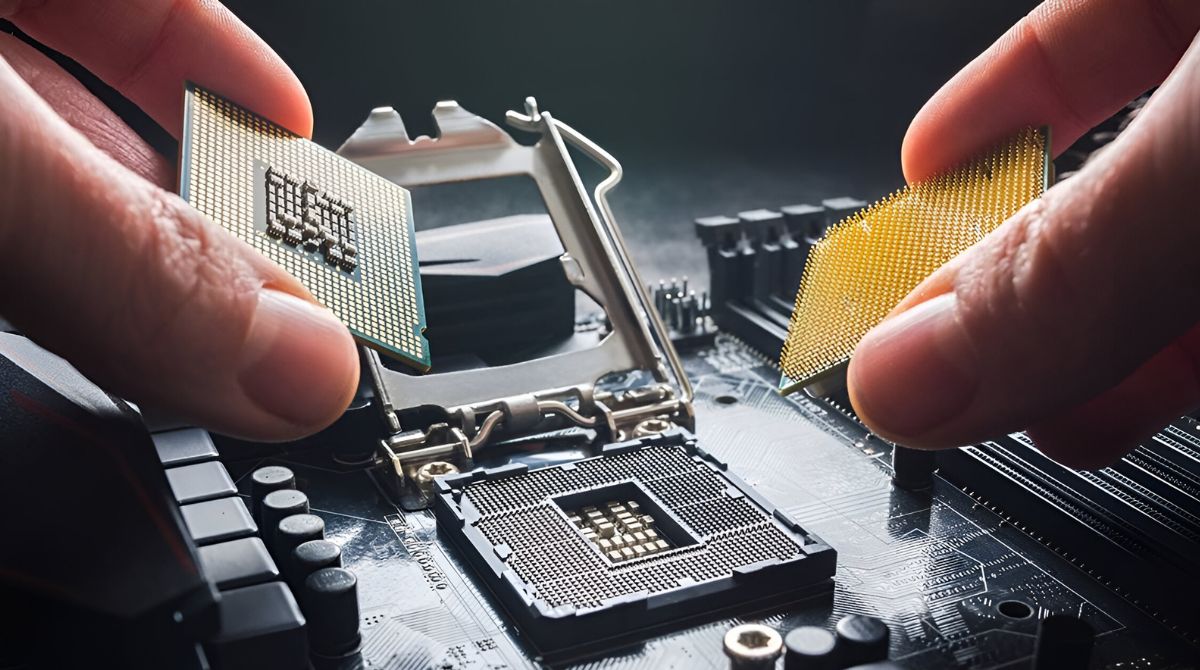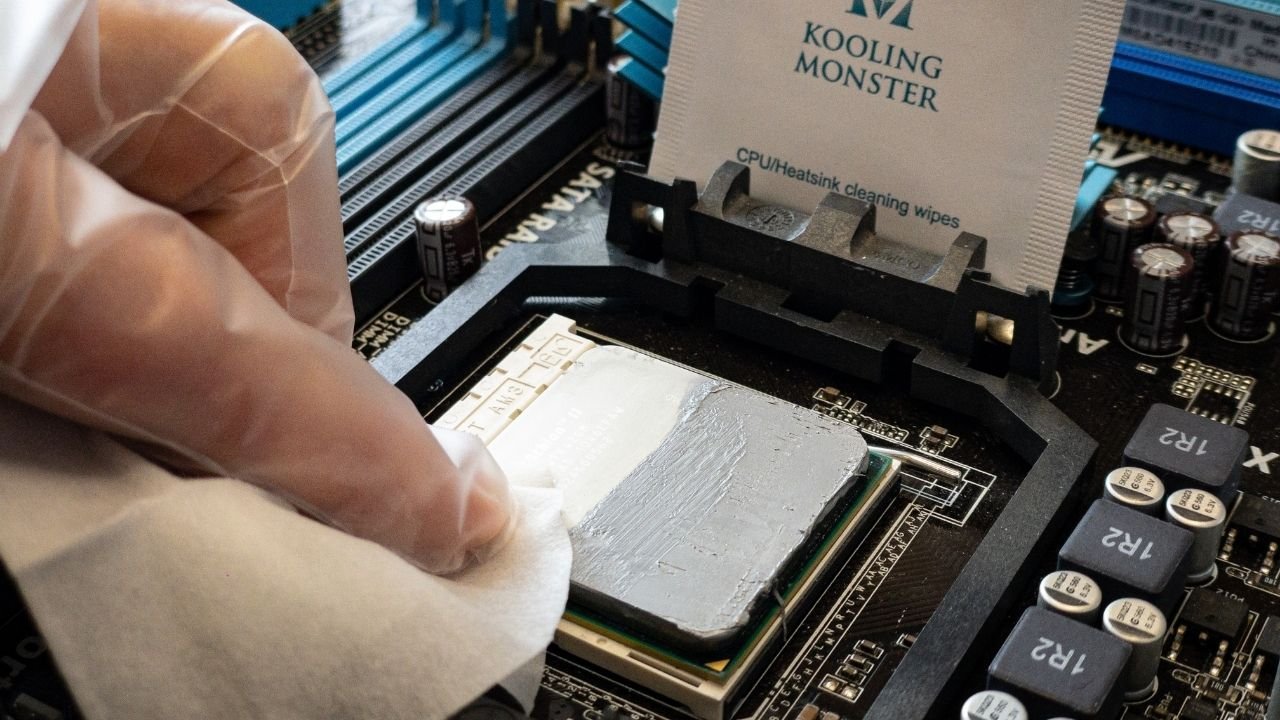Introduction
Upgrading your computer’s hardware is an exciting time. You’re looking forward to a faster processor, more RAM, and improved overall performance. But what about the old components you’ll be replacing? One such component that often gets overlooked is the CPU cooler.
The CPU cooler, also known as a heatsink and fan assembly, plays a critical role in keeping your processor cool during operation. Over time, its effectiveness can decrease due to dust accumulation, wear and tear, or simply becoming outdated compared to newer and more efficient models. When it’s time to upgrade your CPU cooler, you might be wondering, “What should I do with my old CPU cooler?”
This article will explore the various options for handling your old CPU cooler. Whether you choose to recycle, repurpose, donate, or sell it, there are several avenues worth considering. By responsibly dealing with your old CPU cooler, you can ensure it doesn’t contribute to electronic waste and potentially benefit someone else in the process.
So, if you’re ready to say goodbye to your old CPU cooler and make room for the new, let’s dive into the different paths you can take to give it a new lease on life or dispose of it responsibly.
Background: What is a CPU cooler?
Before we delve into the various options for handling your old CPU cooler, let’s take a moment to understand what it is and why it’s an essential component in your computer.
The CPU cooler, or central processing unit cooler, is a vital part of any computer’s cooling system. Its primary function is to dissipate the heat generated by the CPU during operation. As the brain of the computer, the CPU works tirelessly, performing billions of calculations per second. This intense activity generates heat, which, if not properly managed, can lead to decreased performance, system instability, or even permanent damage.
The CPU cooler consists of two main components: the heatsink and the fan. The heatsink is a metal block with multiple fins that provide a large surface area for heat dissipation. It is typically made of copper or aluminum, materials that are highly conductive and efficient at transferring heat. The fan, on the other hand, is responsible for moving air across the heatsink, facilitating the heat transfer process. Together, these components work in harmony to keep the CPU’s temperature within safe limits.
Over time, factors such as dust buildup, thermal compound degradation, and wear and tear can affect the cooling performance of the CPU cooler. This can result in higher CPU temperatures, increased fan noise, and potential performance issues. Upgrading to a more advanced or efficient CPU cooler can help mitigate these problems and ensure optimal cooling efficiency, allowing your system to run smoothly and reliably.
Now that you have a better understanding of what a CPU cooler is and its importance in maintaining the health of your computer, let’s explore the different options for handling your old CPU cooler, ensuring it doesn’t end up as electronic waste.
Reasons to replace your old CPU cooler
While the CPU cooler may not be the most glamorous component in your computer, it plays a crucial role in keeping your system running smoothly. Here are several reasons why you might consider replacing your old CPU cooler:
- Improved cooling performance: Over time, the effectiveness of a CPU cooler can deteriorate due to factors such as dust accumulation, thermal compound degradation, or general wear and tear. By upgrading to a new CPU cooler, you can ensure better heat dissipation and lower CPU temperatures, resulting in improved system stability and potentially better performance.
- Reduced fan noise: As CPU coolers age, their fans may develop bearing issues or become louder due to wear. This can result in increased fan noise, which can be annoying and disruptive, especially during intense computing tasks. Upgrading to a newer model with quieter fans can provide a more enjoyable and peaceful computing experience.
- Compatibility with newer processors: If you’re upgrading your processor to a newer model, it’s essential to check if your existing CPU cooler is compatible. Manufacturers often make changes to CPU socket sizes and mounting mechanisms, rendering older coolers incompatible with newer processors. In such cases, replacing your CPU cooler becomes necessary to ensure a proper fit and optimal cooling performance.
- Better aesthetics: If you’re building a new computer or simply want to enhance the visual appeal of your current setup, upgrading to a modern CPU cooler can add a touch of style to your system. Many CPU coolers feature sleek designs, customizable RGB lighting, and even transparent heat pipes or fans, allowing you to showcase your computer’s cooling prowess.
- Opportunity to overclock: Overclocking is the practice of running a processor at higher clock speeds than its default settings. While this can provide a performance boost, it also generates more heat. Upgrading to a high-performance CPU cooler can help manage the increased temperatures associated with overclocking, allowing you to push your processor to its limits without sacrificing stability.
Considering these reasons, replacing your old CPU cooler can be a wise investment in terms of improved cooling performance, noise reduction, compatibility, aesthetics, and overclocking potential. Now that you understand the motivations behind upgrading your CPU cooler let’s explore the various options for handling your old one in a responsible and sustainable manner.
Options for disposing of your old CPU cooler
When it comes to disposing of your old CPU cooler, there are several options worth considering. It’s important to keep in mind that electronic waste should not simply be thrown away with regular trash as it can have harmful effects on the environment. Here are a few responsible and sustainable ways to handle your old CPU cooler:
- Recycling: Recycling your old CPU cooler is an excellent option to minimize electronic waste and ensure the proper disposal of its components. Many recycling centers accept electronic devices and can safely extract valuable materials from them, such as copper and aluminum. You can check with your local recycling facilities or electronic waste collection events to find the nearest drop-off location for your old CPU cooler.
- Repurposing: If your old CPU cooler is still in working condition, you can repurpose it for other uses. For example, you can convert it into a cooling solution for other devices, such as a Raspberry Pi or external hard drive enclosure. With a little creativity, you can transform your old CPU cooler into a handy cooling accessory for various electronic gadgets.
- Donating: Another option is to donate your old CPU cooler to individuals or organizations in need. Non-profit organizations, schools, or community centers may accept computer component donations for educational purposes or to assist those who cannot afford new hardware. Be sure to clean your CPU cooler thoroughly and check if the recipient has any specific requirements or limitations before making a donation.
- Selling: If your old CPU cooler is still in good working condition and has some market value, you can consider selling it. Online marketplaces and forums dedicated to computer hardware can be excellent platforms to connect with potential buyers. Make sure to provide accurate details about your CPU cooler’s specifications, condition, and any accessories included. Properly package it for shipping to ensure its safe arrival to the buyer.
By exploring these options, you can responsibly dispose of your old CPU cooler while minimizing electronic waste and potentially benefitting others. Remember to choose the option that aligns with your needs and preferences, keeping in mind the environmental impact of your decision.
Recycling your old CPU cooler
Recycling your old CPU cooler is an environmentally responsible option that allows you to dispose of it in a sustainable manner. Recycling helps reduce electronic waste and ensures that valuable materials can be extracted and reused. Here’s how you can recycle your old CPU cooler:
- Check local recycling facilities: Start by checking if there are any dedicated recycling facilities or electronic waste collection centers in your area. Many municipalities provide drop-off locations where you can safely dispose of your old electronic devices, including CPU coolers. These facilities have the expertise to handle electronic waste properly and can safely extract valuable materials for recycling.
- Prepare your CPU cooler: Before recycling, it’s important to clean your CPU cooler and remove any excess thermal paste or other debris. Disconnect the fan and detach the heatsink from the mounting bracket if possible. Be careful not to damage any components in the process. Clean the components using compressed air or a gentle brush to remove dust and dirt. Dispose of the thermal paste separately as it may contain hazardous materials.
- Packaging and disposal: Once your CPU cooler is clean and ready for recycling, package it securely to prevent any damage during transportation. You can use bubble wrap, foam, or other protective materials to cushion the components. Avoid using plastic bags or wrappers that could create a hazard. When dropping off at the recycling facility, follow any specific instructions they provide for electronic waste disposal.
By recycling your old CPU cooler, you contribute to reducing the environmental impact of electronic waste. Valuable materials such as copper, aluminum, and plastics can be recovered and reused, conserving resources and reducing the need for new manufacturing. Furthermore, recycling helps minimize the release of harmful substances into the environment, ensuring a cleaner and healthier planet for future generations.
Repurposing your old CPU cooler
Repurposing your old CPU cooler is a creative and practical way to give it a new lease on life, preventing it from contributing to electronic waste. With a little ingenuity, you can transform your old CPU cooler into a useful accessory or component for various applications. Consider the following repurposing ideas:
- Cooling solution for other devices: If your old CPU cooler is still in working condition, you can repurpose it as a cooling solution for other heat-generating devices. For example, you can attach it to a Raspberry Pi, an external hard drive enclosure, or even a gaming console to help dissipate excess heat. This can be especially beneficial for devices that may overheat under heavy use.
- DIY fan or air purifier: Remove the heatsink and fan from your old CPU cooler and repurpose the fan as a standalone fan or part of a DIY air purifier. You can use it to improve air circulation in your workspace, cool down specific areas, or create a makeshift air purifier by attaching filters to the fan. This repurposing idea allows you to benefit from the cooling capabilities of the fan without the need for a CPU.
- Artistic or decorative piece: If you’re feeling creative, you can transform your old CPU cooler into an artistic or decorative piece. Polish the metal heatsink and arrange it in an aesthetically pleasing way to create a unique sculpture or wall decoration. Some enthusiasts have even used old CPU coolers as part of their DIY lamp designs. Let your imagination run wild and repurpose your CPU cooler into a conversation-starting art installation.
These repurposing ideas not only give your old CPU cooler a new purpose but also showcase your creativity and imagination. By repurposing, you extend the useful life of the component, reducing waste and minimizing your environmental footprint.
Donating your old CPU cooler
If your old CPU cooler is still in good working condition, donating it can be a fantastic way to give it a second life and help someone in need. Many individuals, non-profit organizations, schools, or community centers may benefit from receiving computer components for educational purposes or to assist those who cannot afford new hardware. Here’s how you can donate your old CPU cooler:
- Research local organizations: Start by researching local non-profit organizations, schools, or community centers that accept computer component donations. Contact them directly or visit their websites to find out their specific donation requirements, such as the types of components they accept or any restrictions they may have.
- Reach out to educational institutions: Schools and educational institutions often appreciate donations of computer components for their computer labs or educational programs. Contact local schools, colleges, or universities to inquire if they are in need of CPU coolers or if they can connect you with any educational initiatives that could benefit from your donation.
- Clean and test the CPU cooler: Before donating, make sure to thoroughly clean your CPU cooler and ensure that it is in working condition. Remove any dust or debris and check for any signs of damage. Perform a test to confirm that the fan spins smoothly and that the cooling performance is adequate. It is essential to provide a functional component to the recipient.
- Package and deliver the donation: Package your donated CPU cooler securely to prevent any damage during transportation. Use bubble wrap, foam, or other protective materials to cushion the components. Plan a suitable time and method for delivering the donation to the recipient. Depending on their location and preference, you may need to drop off the donation or arrange for a pickup.
Donating your old CPU cooler allows you to support individuals or organizations in need, potentially helping them access technology they otherwise couldn’t afford. By giving your CPU cooler a new home, you not only contribute to their educational or professional development but also reduce electronic waste and promote a more sustainable approach to technology consumption.
Selling your old CPU cooler
If your old CPU cooler is in good working condition and has some market value, selling it can be a practical option to recoup some of your investment or earn extra cash. There are various platforms and methods available to sell your old CPU cooler. Here’s how you can go about selling it:
- Online marketplaces: Platforms like eBay, Amazon, or Craigslist provide a wide reach and potential buyers from around the world. Create a listing with accurate details about your CPU cooler, including its specifications, condition, and any accessories included. Take clear pictures to showcase the product and set a competitive price based on its age, performance, and market demand.
- Computer hardware forums: Online forums dedicated to computer enthusiasts and hardware enthusiasts can be excellent places to connect with potential buyers. Look for forums focused on buying and selling computer components and create a listing in the relevant section. Engage with potential buyers, promptly respond to inquiries, and negotiate the terms of the sale based on mutual agreement.
- Local classifieds: Consider listing your CPU cooler in local classified ads or community buy and sell groups. This approach may attract buyers who prefer to purchase items in their area, offering the advantage of reducing shipping costs and facilitating a face-to-face transaction. Be sure to specify the condition, price, and contact details for interested buyers to reach out.
- Computer hardware trade-in programs: Some retailers and manufacturers offer trade-in programs where you can exchange your old CPU cooler for store credit or a discount on a new purchase. Check the websites of computer hardware retailers or the manufacturer of your CPU cooler to see if they have any trade-in options available. This can be a convenient way to sell your old CPU cooler while upgrading to a newer model.
When selling your old CPU cooler, ensure that you accurately describe its specifications and condition to avoid any potential issues with buyers. Clean the CPU cooler thoroughly, package it securely, and ship it promptly once the sale is finalized. By selling your old CPU cooler, you not only recover some of its value but also contribute to reducing electronic waste by extending the useful life of the component.
Conclusion
Upgrading your computer’s hardware is an exciting endeavor, and replacing your old CPU cooler is an important part of the process. By considering the various options for handling your old CPU cooler—and choosing the one that aligns with your needs and values—you can ensure it doesn’t end up as electronic waste. Whether you decide to recycle, repurpose, donate, or sell your old CPU cooler, each choice plays a crucial role in minimizing your impact on the environment and potentially benefiting others.
Recycling your old CPU cooler is an environmentally responsible option that allows valuable materials to be extracted and reused, reducing electronic waste. Repurposing your old CPU cooler gives it a new purpose, converting it into a cooling solution for other devices or even transforming it into an artistic or decorative piece. Donating your old CPU cooler allows you to give back by helping individuals or organizations in need, supporting education and reducing technology inequality. Selling your old CPU cooler can help you recoup some of your investment or earn extra cash while extending its useful life.
No matter which option you choose, it’s important to clean your CPU cooler, ensure it is functioning properly, and package it securely for transportation. By responsibly handling your old CPU cooler, you play a part in creating a more sustainable and environmentally conscious approach to technology consumption.
So, the next time you find yourself asking, “What should I do with my old CPU cooler?”, consider the options available to you. Make a choice that aligns with your values and allows your old CPU cooler to have a meaningful and beneficial afterlife. By taking a proactive approach, you can make a difference in reducing electronic waste and contributing to a more sustainable future in the world of technology.







